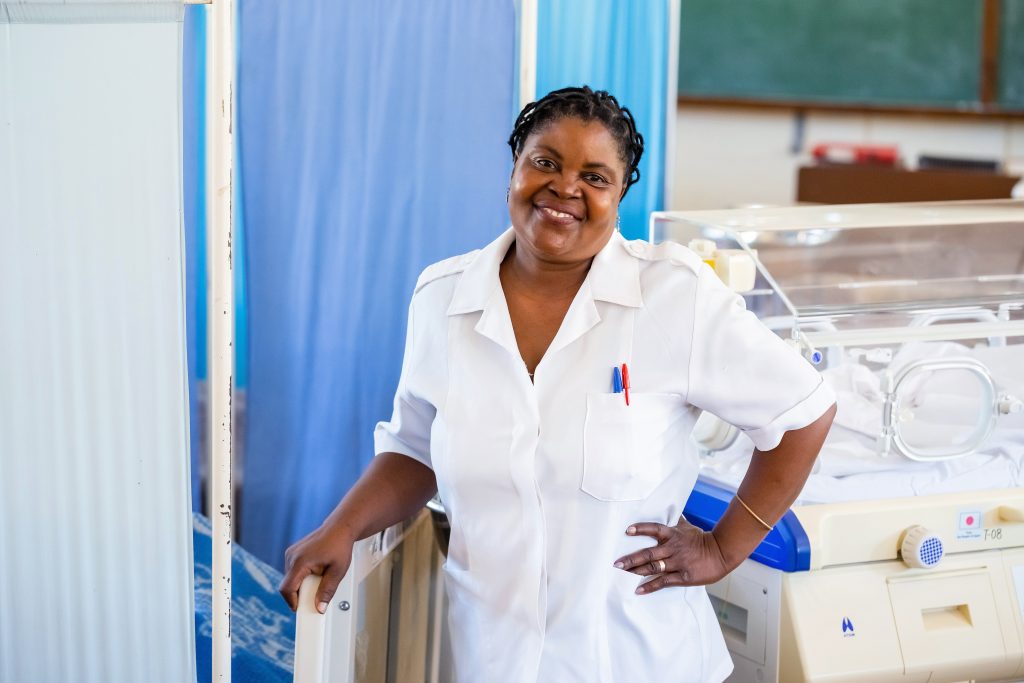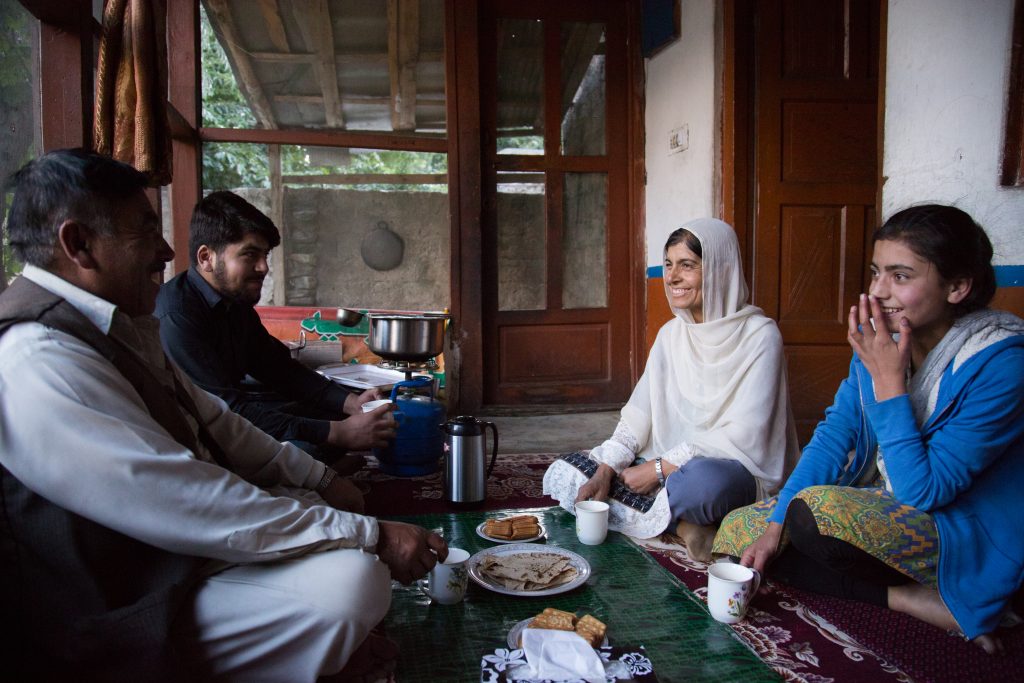By Lindsay Mossman, Senior Gender Equality Advisor
The word “pandemic” comes from the Greek pandēmos, meaning all (pan) people (dēmos). But while COVID-19 has impacted every person on the planet in some way, the effects we each feel are not equal.
How old you are, where you live, your race, your ethnic background, and your socioeconomic status all affect how your world has changed since the pandemic began. Gender is no exception.
There are the basic and most obvious measures of the virus: Initial data suggest that women make up just more than half of the worldwide cases of COVID-19, while men are more likely to die from the virus.
But the pandemic is affecting women and girls in ways that are not as obvious at first glance. As a gender equality advisor for Aga Khan Foundation Canada, I see these effects every day.
Our portfolio of programs invests across a range of Sustainable Development Goals (SDGs), to promote the fundamentals of healthy, prosperous lives: Health care, education, sustainable access to food, economic opportunity, and early childhood development. I work with my colleagues across Africa and Asia to ensure all of these programs also advance gender equality, Goal 5 of the SDGs.
While COVID-19 is having devastating effects around the world, the impact is anticipated to be particularly acute in the developing countries where we work. Our programs, supported in partnership with the Government of Canada, have pivoted to respond.
Here are a few areas that are crucial to an effective and equitable COVID-19 response – whether overseas, or in our own neighbourhoods.
The “shadow pandemic”
The advice to stay home is necessary for slowing the spread of COVID-19, but at the same time it may be accelerating a “shadow pandemic” of domestic violence.
Globally, it’s estimated that one third of women and girls have experienced physical and/or sexual violence at some point in their lives, often at the hands of an intimate partner. Isolation and the added stress of COVID-19 are exacerbating violence in the home. Since lockdowns began in March, increased cases of domestic violence have been reported in countries around the world, including the United States and Canada. Yet at the same time, it’s riskier than ever to seek help. Finding privacy to call a crisis line or leaving home to seek help from a shelter is even more challenging than before.
To respond to this issue in our programs overseas, we support frontline healthcare workers not only with personal protective equipment (PPE) and medical supplies, but also training on how to recognize and respond to signs of sexual and gender-based violence, using a survivor-centred response. We’re also supporting resources for women in crisis. For example, in Mozambique, we’re partnering with psychology and legal aid organizations to make sure a hotline is available for women who need help.
There are ways you can take action, too:
- Support or donate to a local women’s shelter or national network of women’s shelters.
- Be aware of the #SignalForHelp, developed to help women in dangerous situations indicate during a video call that they need help. Learn more about the signal and how to respond from the Canadian Women’s Foundation or the Women’s Funding Network in the United States.

Caregiving at home and at work
Whether it’s healthcare workers on the front lines, children home from school all day, or nursing homes struggling to contain the virus, COVID-19 has put caregiving in the spotlight.
Women make up 70 percent of the global healthcare workforce, mostly as frontline workers like nurses. This means they are more exposed to the virus: At the end of April, women accounted for around 70 percent of the healthcare workers infected with the virus in the United States, with similar numbers coming out of Spain and Italy.
Women also work as caregivers in the informal sector, such as providing home care for seniors. Jobs in the informal sector – which are held overwhelmingly by women, even outside of caregiving roles – offer less security and fewer protections like health insurance or paid sick leave, putting these workers at increased risk.
And in the household, the trend continues. Around the world, women spend an average of two to 10 hours on unpaid care work for every hour spent by men. Add in the closures of schools and childcare, and the burden of caregiving and domestic tasks grows even heavier for women, even in healthy households.
Kids practicing the piano in the background of a conference call or poking their heads into the webcam frame have become a welcome moment of entertainment in many now-virtual workplaces. But in many households, a lack of childcare means that women who are still employed are under disproportionate strain. This is particularly acute for those who can’t work from home, and may have to reduce their hours or quit their jobs altogether.
To respond to this challenge, our programs overseas are ensuring that women engaging in care work, including those on the front lines like community health volunteers, receive PPE and other supplies to keep them safe, and support for child care and safe transportation.
We are also helping women entrepreneurs to pivot their businesses to continue to support themselves and their families during the pandemic. For example, in Afghanistan, women with tailoring businesses have started making and selling face masks.
You can take action:
- At home: If you live in a household with other adults (or children old enough to do chores), do a “time audit.” Create a simple spreadsheet and track your time in 15-minute increments for a day or week. Compare each person’s allocation to earning an income, doing household chores and domestic tasks, and recreation. If there are inequalities, look for opportunities to even the load.
- In the workplace: Implement policies and practices to alleviate competing priorities at work and at home. UN Women, UNICEF, and the International Labour Organization have released a set of recommendations for employers.

Women’s leadership
Around the world, women are active members of their communities. However, at the highest levels where policies and decisions are made, their voices are strikingly absent. While women are the majority of the global healthcare workforce, particularly on the front lines, they are under-represented in the management and leadership teams. Women healthcare workers have spoken out about their lack of participation in COVID-19 response decision-making, in Italy and other countries.
When women aren’t at the decision-making table, their unique experiences and views aren’t factored into the process. This can lead to major oversights in designing effective and sustainable responses that meet everyone’s needs.
(As a proud Canadian, I should point out that half of Canada’s provincial and national chief medical officers and public health officers are women, including the chief medical officer for the entire country. But Canada still has a long way to go when it comes to equality in leadership positions, as does the rest of the world.)
We can make progress. In Uganda, our COVID-19 response includes partnerships with local women’s organizations, which represent and work with women in their communities. We provide funding for them to develop and implement initiatives tailored to their needs.
You can take action:
- It doesn’t matter if you’re leading a pandemic response, managing a team, or forming a neighbourhood committee: Make sure women (particularly women from diverse backgrounds) are at the table and that their views are heard and acted upon.
- Make a donation to a local or national organization that promotes women’s leadership.
Whether we’re talking about home, the workplace, or the halls where laws and policies are made, inequality is not new. COVID-19 is simply forcing us to confront these inequalities in new, more visible ways.
And of course, this is not just about women and girls.
Any groups that were marginalized in the “before times” – women and girls, yes, but also racialized communities, people with disabilities, low-wage workers, and the elderly – are now facing even more strains and challenges when it comes to coping with and recovering from the pandemic.
In all areas of our lives, we are changing our routines and adopting new ways of doing business. As we talk about the future, we keep hearing predictions about the “new normal” and what it will look like. This is an opportunity to examine the structures around us, and change them to benefit everyone.
Lindsay Mossman is the senior gender equality advisor for Aga Khan Foundation Canada. The global Aga Khan Foundation is a Founding Stakeholder of IMPACT 2030. Learn more about AKFC, and the Foundation’s response to coronavirus around the world.
Want to learn more? Check out this webinar:
With support from:

